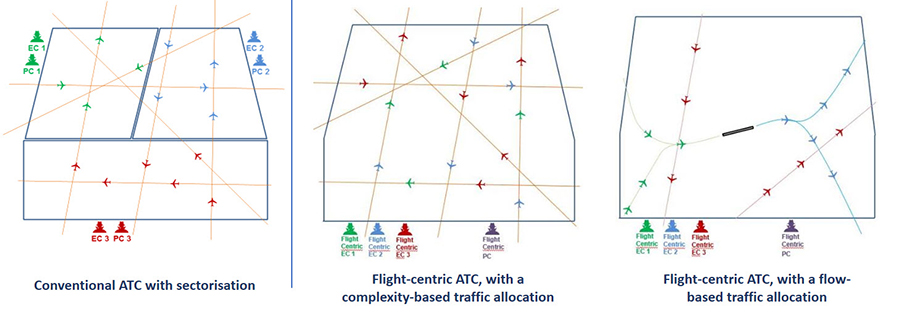BUILDING A SEAMLESS UPPER AIRSPACE TO DISTRIBUTE TRAFFIC MORE EFFECTIVLEY
This Solution was formerly PJ.10-01b
European airspace is divided into flight information regions, which are subdivided into sectors to provide safe separation services for aircraft travelling through the airspace. Changing this to a flight-centric structure without reference to geographical sectors opens up the opportunity to distribute the traffic more evenly, and to avoid lost productivity in under-loaded sectors.
SESAR researchers are validating the candidate solution in en-route environments where specific flights are assigned to controllers, who, unconstrained by geographical location or sector, are in charge of guiding each of these flights through a large airspace. With flight-centric ATC, the controller is no longer in charge of managing the entire traffic within a given sector. Instead, he/she is now responsible for a certain number of aircraft throughout their flight segment within a given airspace. This means that other controllers may also be working in the same airspace managing a certain number of different aircraft.
The candidate solution relies on the support of wide area communication over VHF in case the flight-centric area extends over approximately 200 NM, recognising that today the VHF radio coverage area is approximately 200 NM.
The research includes validating procedures for conflict detection and resolution; exploring different team set-ups and traffic allocation strategies; defining tools and procedures for demand and capacity balancing; and quantifying expected benefits. The flight-centric candidate solution requires new tools relating to traffic allocation. Advanced conflict detection and resolution tools are required which may have multiple functions. In the event of a conflict for example, it is important to determine which controller is responsible for its resolution. Furthermore, these tools can help to allocate conflicts to controllers.
The candidate solution is expected to increase of controller productivity owing to a better balance of the demand and increase flight efficiency by removing the sectors entry/exit conditions.
BENEFITS
Enhanced safety and capacity
Improved environmental performance

